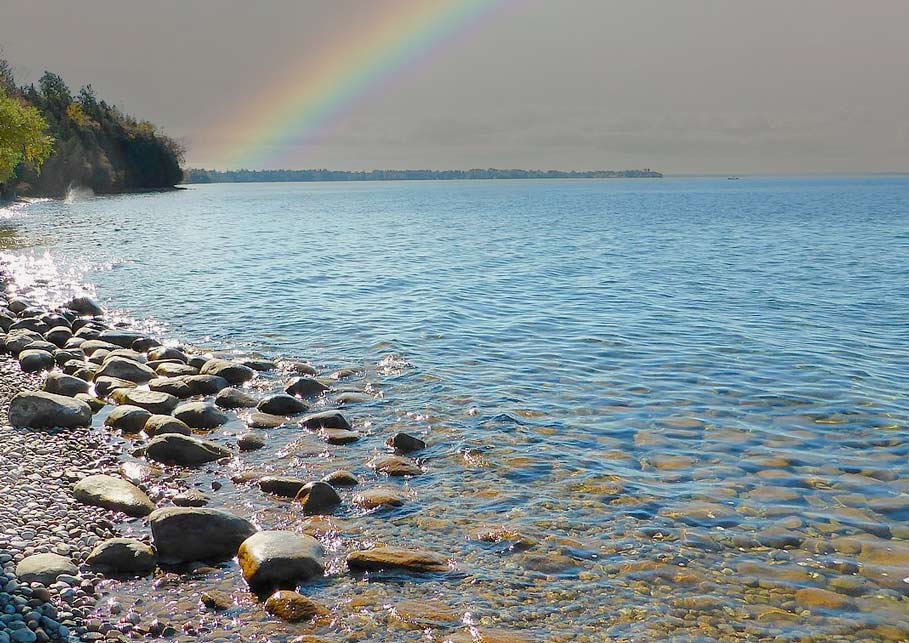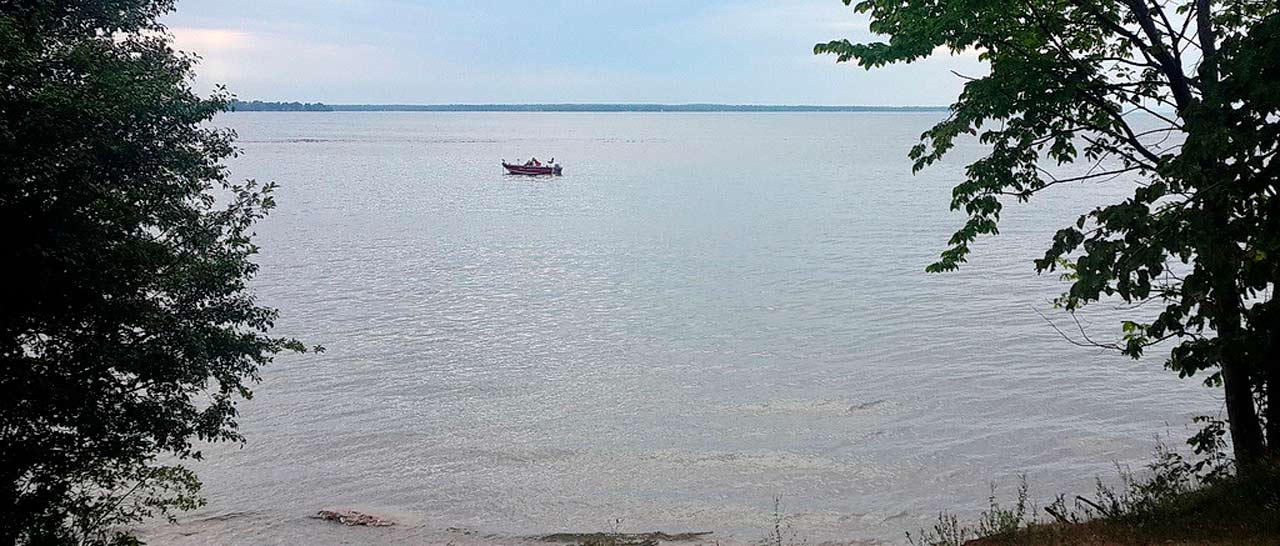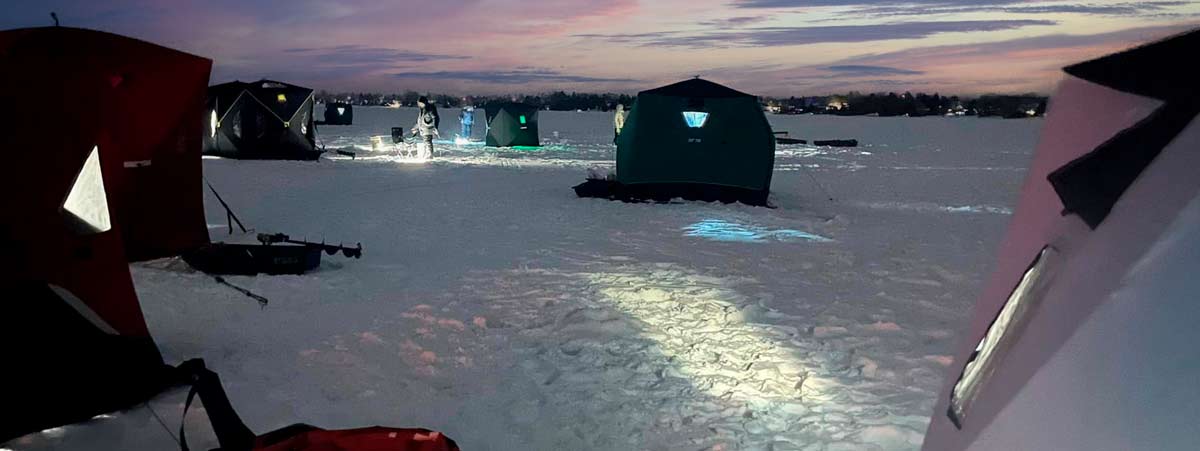Ask any local angler about Lake Simcoe, ON, and you’ll likely hear stories about trophy smallmouth bass, jumbo perch, or exciting ice-fishing adventures. Among Ontario fishing lakes, Lake Simcoe stands out as the fourth-largest and one of North America’s premier fishing destinations. But for many anglers, the thrill doesn’t stop at the water’s edge – they’re also embracing the excitement of online gambling as a way to unwind and keep the adrenaline flowing after a day of fishing.
Hooked on Luck: Why Anglers Love Online Gambling
The thrill of spinning a virtual slot reel or placing a strategic bet in a poker game mirrors the excitement of reeling in a big catch. With the rise of secure and accessible online casinos, anglers can enjoy this modern pastime from the comfort of their fishing cabins or homes, blending their love for risk and reward. Top online casinos even offer themed games, allowing fishing enthusiasts to keep the spirit of adventure alive between trips. A bounty of reliable virtual options waits for the best online casinos in Canada lovers to check the digital frontier between casts. You’ll find a lineup of secure, exciting sites packed with games that cater to every type of player, from slots to live poker. If you’re wondering what to look for when selecting the best online casinos in Canada, key factors like licensing, game variety, and fast payouts should top your list. Plus, with the closer look at the top 6 casino sites, here are spotlighted the standout features – like generous bonuses and fishing-themed slots – that make these destinations a cut above the rest.
To give you a sense of what’s out there, here’s a quick rundown of some popular fishing-inspired games you might find:
- Big Bass Bonanza: Dive into a deep-sea adventure where wilds and multipliers feel like landing the catch of the day.
- Fishin’ Frenzy: A laid-back coastal vibe with simple gameplay and the chance to hook some hefty wins.
- Reel ‘Em In Lobster Potty: Quirky and fun, this one’s all about trapping lobsters – and maybe a jackpot too.
As you plan your fishing adventure to Lake Simcoe, here are some quick facts about the lake to get you started. Understanding the lake’s size, depth, and features can help you map out the best fishing spots and enhance your overall experience.
Quick Facts: Lake Simcoe
- CopySurface Area: 744 square kilometres
- Average Depth: 51 feet
- Maximum Depth: 135 feet (Kempenfelt Bay)
- Shoreline Length: 240 kilometers
- Distance from Toronto: 1 hour
- Number of Ice Huts (Winter): 4,000+
- Major Fish Species: 8+

Lake Simcoe has earned its reputation as the fishing capital of Canada for good reason. During winter, the lake transforms into a vibrant community of ice fishing enthusiasts, with thousands of anglers gathering on its frozen surface. Come summer, these same waters host countless boats pursuing trophy bass and lake trout.
What truly sets Lake Simcoe apart is its accessibility and world-class fishing opportunities. The lake sits less than an hour’s drive from Toronto, making it possible for city dwellers to experience exceptional fishing without a long journey north. Whether you’re chasing trophy smallmouth bass, searching for jumbo perch, or hoping to land a massive lake trout, Lake Simcoe delivers year-round action for anglers of all skill levels.
Where Is Lake Simcoe?
Situated at 44.4229° N, 79.3690° W, Lake Simcoe occupies a prime location in Southern Ontario. The lake is embraced by several major communities, with the city of Barrie marking its western shore and Orillia guarding its northern reaches. The eastern shoreline hosts the communities of Georgina and Beaverton, while Bradford and Innisfil line the southern edge.
This central location makes Lake Simcoe incredibly accessible. Toronto anglers can reach the lake in about an hour, while American visitors from Buffalo can make the drive in roughly three hours. Even Detroit anglers find Lake Simcoe within reasonable reach at about five hours away. This accessibility, combined with the lake’s exceptional fishing, draws visitors from across North America.

What Makes Lake Simcoe Special?
What sets Lake Simcoe apart? Three things:
- Less than an hour’s drive from Toronto
- Year-round fishing action
- Trophy-sized fish of multiple species
Among the top fishing lakes in North America, Lake Simcoe fish species offer serious trophy potential. The lake trout ice fishing opportunities attract anglers from across the continent, while various Ontario fish species, like smallmouth bass pushing 8 pounds, are caught regularly. Yellow perch over 14 inches – true jumbos by any standard – make frequent appearances. For those wondering how to catch trout ice fishing, the deeper waters provide ideal conditions, with lake trout exceeding 20 pounds patrolling these depths.
The lake’s diverse habitat supports this impressive fishery. Deep, cold waters provide ideal conditions for lake trout and whitefish. Extensive shallow weed beds harbour bass and pike, while mid-depth areas hold massive schools of yellow perch. This habitat diversity means anglers can target different species throughout the year using various techniques.
Lake Simcoe Fish Species Guide
Species | Size Range | Best Season | Preferred Depth | Best Locations | Notes |
|---|---|---|---|---|---|
Yellow Perch | 8-14 inches | Winter/Fall | 15-40 feet | Cook’s Bay, Atherly Narrows | Most popular winter target, excellent eating |
Smallmouth Bass | 2-8 pounds | Summer/Fall | 20-40 feet | Main lake structure, rocky points | Trophy potential, catch & release encouraged |
Lake Trout | 5-20+ pounds | Summer/Winter | 60-85 feet | Kempenfelt Bay | Deep water technique required |
Lake Whitefish | 2-8 pounds | Winter | 60-80 feet | Deep basins, Kempenfelt Bay | Popular ice fishing target |
Northern Pike | 5-15+ pounds | Spring/Fall | 5-25 feet | Cook’s Bay, weed edges | Aggressive predator, great fighting fish |
Black Crappie | 10-14 inches | Spring | 5-15 feet | Marinas, river mouths | Early spring specialty |
Largemouth Bass | 2-5 pounds | Summer | 5-15 feet | Cook’s Bay, shallow bays | Weed-oriented species |
Fishing Seasons
Winter Fishing (January-March)
Winter transforms Lake Simcoe into an ice-fishing paradise. More than 4,000 ice huts dot the frozen surface during peak season, creating temporary villages on the ice. This period offers the year’s most consistent fishing, particularly for yellow perch, which remain active and schooled up throughout the winter months.

The deep waters continue producing lake whitefish and lake trout for anglers willing to venture further offshore. Even northern pike provide action through the ice, often surprising perch anglers with aggressive strikes on small baits. Modern ice huts, equipped with propane heat and comfortable seating, make winter fishing surprisingly comfortable.
Spring Fishing (April-May)
As ice retreats from Lake Simcoe’s surface, spring brings exciting fishing opportunities. The post-ice-out period marks a prime time for black crappie fishing, with these tasty panfish gathering around marinas and river mouths. Savvy anglers target the Holland River mouth and Atherly Narrows, where warming waters concentrate fish.
Yellow perch remain active in spring, though their locations become more scattered than during ice fishing season. The second Saturday in May kicks off pike season, drawing anglers to emerging weed beds where these predators hunt actively. Cook’s Bay’s shallow waters warm first, making it a spring fishing hotspot.
Summer Fishing (June-August)
Summer ushers in Lake Simcoe’s renowned bass season, starting the fourth Saturday in June. The lake has gained fame for its extraordinary smallmouth bass fishing, with fish regularly exceeding five pounds. This growth spurt largely stems from the round goby invasion – while invasive, these small fish have become a protein-rich food source for bass.
Deep-water fishing remains productive throughout summer. Lake trout and whitefish seek cooler waters, typically holding in depths of 60-85 feet. Vertical jigging with spoons or drop-shot rigs produces consistent action. Meanwhile, largemouth bass prowl the extensive weed beds of Cook’s Bay and other shallow areas.
Fall Fishing (September-November)
Fall might be Lake Simcoe’s best-kept secret. As recreational boating traffic diminishes, serious anglers find themselves with more room to work. This period offers the year’s best chances at trophy smallmouth bass, particularly during cold, cloudy days when these bronze bombers feed aggressively.
Northern pike also become more active in fall, cruising deeper weed edges and targeting schools of baitfish. Yellow perch begin schooling more tightly, offering excellent fishing opportunities for those who can locate them. The cooler weather and active fish make autumn an underrated prime time on Lake Simcoe.
Lake Simcoe Fishing Hot Spots
Cook’s Bay stands out as Lake Simcoe’s most productive shallow-water area. This southern extension of the lake features extensive weed growth and consistently produces excellent fishing for perch, pike, and largemouth bass. The bay’s relatively shallow depth and abundant structure make it particularly appealing during spring and fall.
Kempenfelt Bay, in contrast, offers Lake Simcoe’s deepest waters and the best opportunities for cold-water species. This deep-water basin near Barrie holds lake trout and whitefish year-round. During winter, the deeper sections become popular among ice anglers targeting these species.
The Holland River mouth area provides excellent fishing during seasonal transitions. Spring brings concentrations of crappie and perch, while summer finds bass relating to the river’s numerous points and drops. The area’s varied structure creates multiple fishing opportunities throughout the year.
Ice Fishing Services
Lake Simcoe’s ice fishing industry has evolved into a well-organized network of professional operators. Before heading out, anglers should check the Lake Simcoe ice conditions report and consult a detailed Lake Simcoe fishing map.
Leading services like Tim Hales Fish Huts in Beaverton and Floyd Hales Fish Huts have perfected the art of providing comfortable, safe ice fishing experiences. Fishsimcoe Hardwater Outfitters in Churchill and Hot Box Huts in Innisfil round out the major operations serving different areas of the lake.
A typical ice hut rental includes more than just shelter. Most operators provide:
- Transportation to and from fishing spots via heated snow bus
- Properly maintained huts with propane heat
- Basic fishing equipment for those who need it
- Live bait and fishing advice
- Safety equipment and ice condition monitoring
The competition among operators benefits anglers, as each service strives to provide the best experience possible. Many now offer online booking, real-time fishing reports, and even Wi-Fi in some huts.
Regulations to Know
Lake Simcoe falls under Ontario Fishing Regulations Zone 16, but the lake has several special regulations reflecting its status as a significant fishery. All anglers need a valid Ontario fishing license, available online or from local vendors.
Some key Lake Simcoe-specific regulations include special seasons for lake trout and whitefish (January 1 to March 15 and the second Saturday in May to September 30) and unique catch limits. Yellow perch have a generous daily limit of 50 fish, though responsible anglers often practice selective harvest of smaller fish to protect the trophy potential.
Conservation remains a priority on Lake Simcoe. The lake’s catch-and-release ethic, particularly for trophy smallmouth bass, has helped maintain its status as a premier fishing destination. Muskellunge fishing is currently closed year-round to protect this species.
Planning Tools: Using a Lake Simcoe Fishing Map
Modern technology has made fishing Lake Simcoe more accessible than ever. Essential resources include fishing maps and a detailed Lake Simcoe map to locate productive areas. The Lake Simcoe message board and fishing apps provide real-time updates on conditions and hot spots. Navionics electronic charts help anglers understand the bottom structure and find productive areas. Local weather reports and ice safety updates prove crucial for safe, successful outings.
Social media and online forums have created a community where anglers share reports and advice. Following local bait shops and fishing guides on platforms like Facebook can provide valuable insights into current fishing patterns.
Where to Stay
Lake Simcoe offers accommodations suitable for every budget and preference. The Briars Resort at Jackson’s Point provides upscale lodging with easy lake access. The Inn on the Lake in Keswick caters specifically to anglers with its convenient location and fishing-friendly policies.
Many ice hut operators have partnered with local motels and cabins to offer package deals during winter. Several operators maintain their own accommodations, making it convenient to get an early start on the ice.
Best Times of Year to Visit Lake Simcoe
Each season on Lake Simcoe offers unique opportunities:
- January-March: Prime ice fishing season. Book huts well in advance, especially for weekends.
- April-May: Excellent shore fishing opportunities for perch and crappie.
- June-August: Peak season for smallmouth bass and deep-water species.
- September-November: Trophy bass fishing with fewer crowds.
Consider weekday trips during peak seasons to avoid crowds. Early morning and evening typically produce better fishing, especially during summer months.
Frequently Asked Questions
Typically, safe ice forms by mid-January, though this varies yearly. Always check local ice reports and never venture out alone early or late in the season. When asking “is Lake Simcoe frozen,” always confirm current conditions with local operators.
Yellow perch ranks as the most popular table fare, followed by whitefish. Many anglers practice catch-and-release for bass and larger pike.
Yes, Ontario requires a valid fishing license year-round, including ice fishing. Purchase your license online or from local vendors before fishing.
For precise depths, consult a Lake Simcoe depth map. Generally, the lake averages 51 feet deep, with Kempenfelt Bay reaching depths over 135 feet. Most fishing occurs in 15-85 feet of water, depending on species and season.
Major highways connect to all the shores of the lake. From Toronto, take Highway 400 north to Barrie or Highway 404 north to Keswick. Multiple public access points and marinas welcome visitors around the lake’s perimeter.